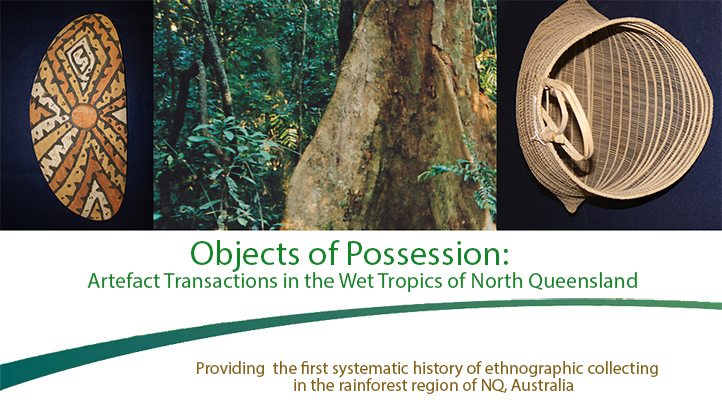
Walter Edmund Roth. Walter Roth Museum of Anthropology, Department of Culture, Ministry of Culture, Youth and Sport, Republic of Guyana: http://www.mcys.gov.gy/walter_roth_pioneer.html
Author: Maureen Fuary
Collector: Dr Walter Edmund Roth
Born: 2 April 1861. London, England
Died: 5 April 1933 in Georgetown, Guyana
Active: In the Wet Tropics, Roth collected between c.1898 and c.1903 in the following areas: Bloomfield, Tully, Lower Tully and Russell rivers; Atherton Scrub; Cape Grafton; Cairns hinterland; Cardwell; and Geraldton (Innisfail).
Background Biography: After Walter Roth arrived in Australia in 1887 he taught at grammar schools in Brisbane and Sydney before returning to England in 1891. He arrived back in Australia two years later as a new medical graduate and was appointed surgeon to three hospitals in North-Western Queensland. He began to document Aboriginal life and culture and to collect Aboriginal objects, and when he published the results of his study he gained the position of Northern Protector of Aboriginals in 1898.This was the era of intensive development of extractive industries, especially pearling and mining, and Roth’s position in Cooktown placed him at the pointy end of policing shonky operators exploiting Aboriginal labour on these remote frontiers.
From Cooktown he travelled widely throughout North Queensland, combining his Protector’s role with the study of Aboriginal people and collection of items. It was far from a seamless role and Roth courted controversy. In 1904 he briefly held the position of Chief Protector. His ruffling of many influential people’s feathers came to a head in 1905 with a public petition against him playing out in Parliament and the press. He was accused of taking pornographic photographs, and his sale of over 2,000 objects to the Australian Museum in Sydney, rather than their donation to the Queensland Museum, was never fully resolved. Roth made a timely exit from Australia in 1906.
In his writings Roth clearly sees himself as ‘the scientist’, set apart from Aboriginal people who he is studying, protecting and ministering to as a doctor. He was a meticulous collector, drawing many objects by hand and describing their manufacture in fine detail. Like many other scientists of his time, Roth collected and classified objects by type and included extensive lists and detailed descriptions in his publications. In essence, his publications are encyclopaedic but because of their detail, they remain an invaluable record of Aboriginal peoples and their ways of life in North Queensland, including the Wet Tropics.
